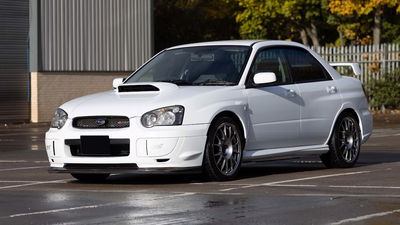What Are Electric Superchargers, And Do They Actually Work?

There’s nothing quite like a supercharger whine. That high-pitched shriek from the belt-driven mesh as it compresses air into the cylinders is one of our most loved sounds as petrolheads. Almost seen as a ‘bolt on’ application, some of the greatest powertrains ever made have been supercharged, be it Jaguar’s V8, the 5.4-litre engine from the Mustang GT500 or the 638bhp motor from the Corvette ZR1. Although Formula One has come along and used electric motors for turbocharging purposes, electric superchargers have also been floating around the internet as a possible modification in the last few years. So how do they work?
There are two types of electric supercharger. The first is more of a fan than specifically a supercharger. Attached directly to the inlet manifold, the cylindrical component acts basically as a desk fan, sucking air into the intake and then forcing it into the cylinders. You can find plenty of these contraptions on the Internet but it is essentially a big scam. These ‘superchargers’ are in fact only bilge pumps, designed to help pump unwanted water from the deck of a small boat.

Due to the small fins and relatively low speed of these pumps, they struggle to create any real form of compression. This lack of compression means that the inlet air gains little to no pressure and therefore the air entering the cylinders barely gains any energy, resulting in no real power increase.
The second type of electric supercharger uses a donor turbocharger with an electric motor attached, otherwise known as an E-supercharger. The electric power is converted to torque from the electric motor to the spinning impeller within the turbocharger which will be forced to spool up at the rate of the increase of electrical current flowing through it. Due to the purpose-built fins within the turbo, the incoming air will be compressed to a level that will pressurise the air supply to the cylinders enough to see genuine power gains.

The electronics come in the shape of an electric motor connected to the throttle either at the throttle body in the engine bay or at the throttle pedal. This allows for the electric motor to spin the fan at a rate in proportion to the amount of throttle being applied, simulating the belt-driven action of a conventional mechanical supercharger. This motor is powered by an attachment to the car’s battery which brings up an inherent problem with electric supercharging.
Compressing air takes a whole load of energy; around 6-7bhp for every psi of boost is sapped from an engine to drive a mechanical supercharger. Applying that to electronics, a 12-volt battery will barely be capable of providing the energy needed to perform anywhere near the same capabilities of an engine’s crank. Therefore, electronic supercharger kits from eBay or any other website will generally provide little to no increase in power and may even cause a net decrease in power by sapping the charge from the battery. Although an E-supercharger can create the required boost, it still needs a large electrical supply to function to its full potential.

Therefore, to power all of a car’s electrical equipment as well as an additional E-supercharger, a 48-volt battery would really be needed. Although, considering the sheer amount of electrical tech on cars these days, it probably won’t be long until a 48-volt unit becomes standard.
The benefits of an electric supercharger come in the form of a minimal lag time and a high rotational speed. While turbochargers can take a couple of seconds to spool up and mechanical superchargers still having some inherent lag, an electric supercharger can spool fully in as little as 0.5 seconds through the direct connection with the throttle, giving virtually instant maximum boost. Mechanical superchargers max out at around 60,000rpm whereas the electrical equivalent can reach a speed of up to 120,000rpm, even higher than most turbochargers.

If electric superchargers can be fully engineered and combined with the relevant electrical supply, they could start a new mini revolution within the current obsession of downsizing. With manufacturers having to fully address turbo lag as they create more and more forced-induction engines, electric supercharging could be an instant fix if mass produced. However due to the costs involved with the research and development of such a component - plus the impending change in power supply that would be needed to make it function effectively - it will probably be a while before we see electric supercharging properly taking off.
Mechanical supercharging on the other hand is turning into a thing of the past due to its power-sapping nature and the sheer heat created by such systems. With electronics beginning to dominate in almost every aspect of motoring however, supercharging may well be about to make a comeback. RIP natural aspiration…














Comments
rip naturally aspirated engines? yeah right. manufacturers might stop, but we will not
I have a question. I want to know the mechanism as to how the motor would possibly spin corresponding to engine RPM.
Electric Superchargers and electric turbochargers would be a great match with hybrids. They already have the battery power needed.
I have use this electric supercharger created a 24 V lithium power pack with a Lipo charger inside of a aluminum case. And I was able to get 5 psi From the boost/vacuum gauge I added
Pagination